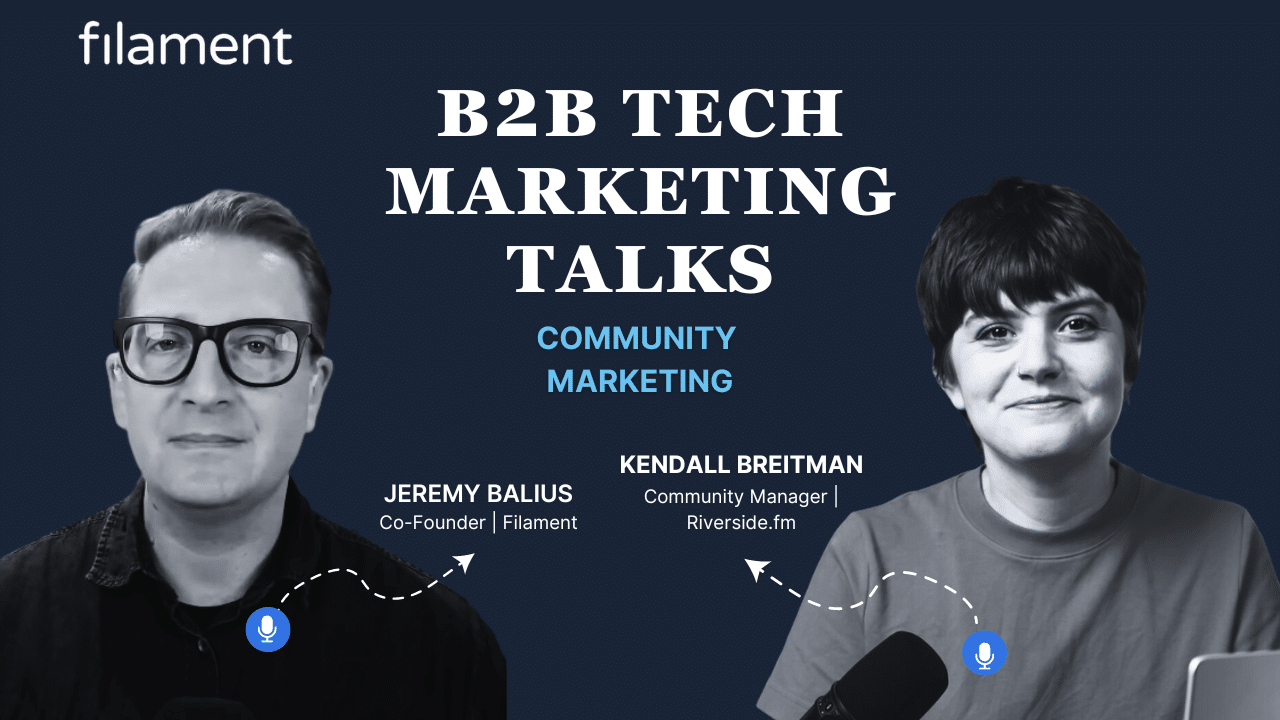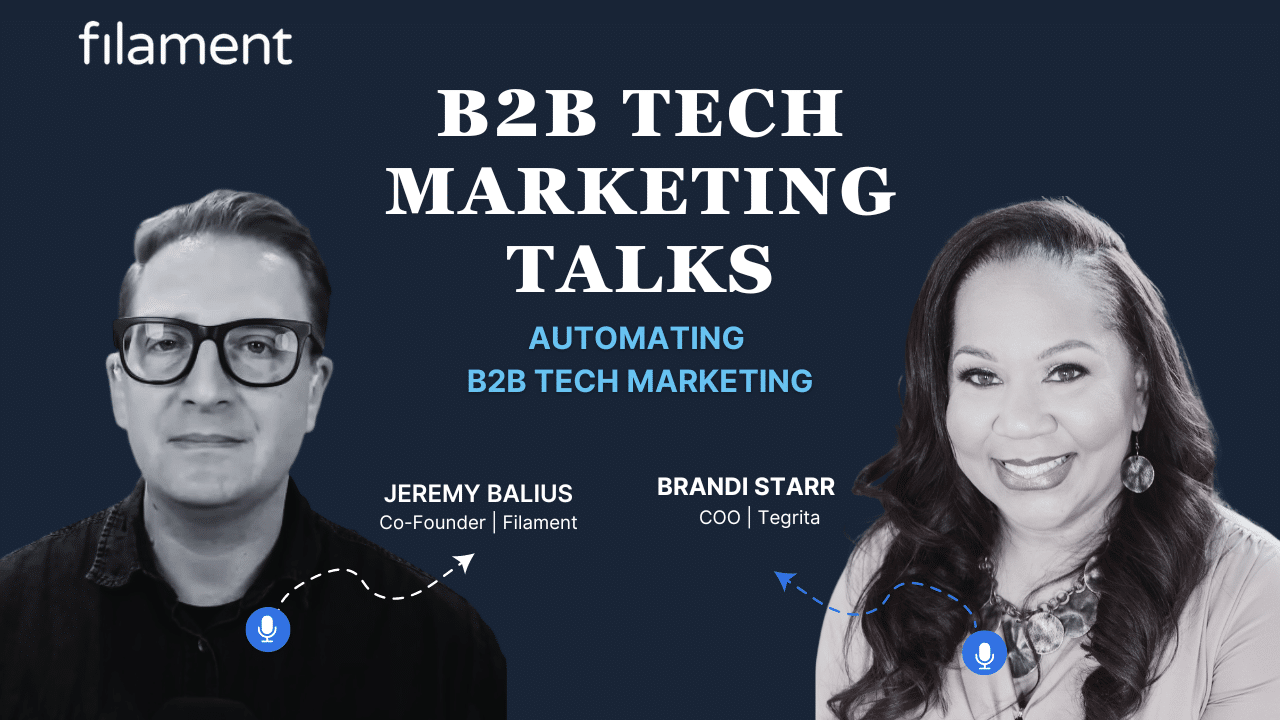Channel Partner Marketing Enablement: How to Boost Channel Sales
Attracting and retaining ideal fit channel partners unlocks the success of your channel program. But, if you want your channel sales to skyrocket, enabling your partners to perform their best is the surest way to success. This fact is particularly relevant when it comes to marketing.

Why is channel partner marketing enablement so powerful?
CompTIA found that about 88% of the 137,421 channel partners in the U.S. information technology sector were “micro-channel firms”, each with nine employees or fewer. This data suggests that the majority of partners might not have the resources to efficiently market your products.
And it’s not just the smaller end of the partner spectrum – even mid-tier and larger partners struggle to implement channel enablement content. This is often because their marketing teams are already stretched to their full capacity, so they can’t make full use of vendor marketing materials.
Added to that is the fact that marketing materials tend to be vendor or product-centric, and partners find it too time-consuming to rework materials so that they mesh with their own brand tone and appeal to their own target audience.
But channel partner marketing enablement can help your partners overcome these limitations and still provide great value. And enabling your partners with the tools and content they need to take their marketing efforts to the next level goes beyond just improving their sales and increasing your profits. It also breeds channel partners who will be loyal to you.
If these advantages seem compelling to you, the following six areas of partner marketing are prime targets for promoting better enablement.
6 Tips For Channel Partner Marketing Enablement
- Enable engaging marketing content and optimised use of content
- Enable the right marketing options for your spectrum of partner types
- Enable frictionless access to marketing resources
- Enable channel partners to get the most out of their marketing efforts
- Enable channel partners to better educate end user customers
- Enable face to face interactions with partners
1. Enable Engaging Marketing Content and Optimised Use Of Content
Marketing cannot exist without content, and not all content is effective. Every marketer knows that a significant driver of sales is engaging content that promotes customer conversions and loyalty.
How do you make sure your partners are producing engaging content, and getting the most out of every post? Provide marketing templates and collateral that partners can customise for distribution.
It’s also important that you give them data-driven assets to inform their strategy, like:
- Competitive analysis
- Statistics
- Case studies
- Customer success stories
- White papers
These types of marketing assets do more than make you look good on paper. They also give your partners material they can draw their own insights from, and so give back more value to your brand over a longer period of time.
But making sure your partners know how to use your content is just as important as making it engaging.
How important is this alignment? A 2018 Content Marketing Institute and LinkedIn study found that 80% of marketers in highly-aligned companies did more than provide their salespeople with great content. They also showed them how and when to use it.
When you’re creating assets for your partners, think about incorporating scheduling guidelines, like frequency rates and cross-sharing opportunities, as well as branding and messaging guides. This is both to make it easier for your partners to use your resources and to ensure that you’re creating the right content for your marketers’ needs.
Your partners’ marketing efforts might be well-intentioned, but they also might be a bit random and hit-or-miss. But, by ensuring you give them the right types of content and a proven template for how to use it, you’ll not only make your brand messaging consistent across channels, you’ll also be creating systems and processes for your partners to help support future growth.
Just remember: Engaging marketing assets and optimisation should always go hand in hand. And you don’t just need to optimise for different channels or audiences – you also need to optimise for different types of partners.
Which leads us to our next point…
2. Enable the Right Marketing Options For Your Spectrum Of Partner Types.
Individual channel partners are always unique. They may vary greatly in terms of their team size, locations and budget.
The type of technology company they are in your channel will also have an effect, since Managed Service Providers (MSPs) and Value-Added Resellers (VARs) may generate leads differently to System Integrators (SIs), Distributors or Aggregators.
Also, each will have a different marketing maturity and might have different ideas about how best to market their products and services in the context of your products.
Providing the same resources, guidance and support to all partners is a recipe for overwhelming your partners with information they might not need. Companies with good partner marketing enablement programs are cognisant of that fact. They try to avoid falling into the trap of becoming one of the 43% of B2B companies who have lost sales as a consequence of not having the right content, at the right time, for specific customers.
So if you want to promote better channel partner marketing enablement, make sure you have options for partners of different experience levels, budgets and marketing styles. Keep in mind that, while some might need resources from you to customise a single brochure, others might need assets to support multi-faced, integrated campaigns.
Naturally, expanding the marketing options you make available to partners introduces an added layer of complexity to your campaigns. This is why it’s also important to have a platform that facilitates intuitive and frictionless access to the precise resources partners need, when they need it.
3. Enable Frictionless Access To Marketing Resources
A fully-realised suite of marketing resources for every type of marketer is only good if your partners can get to it when they need it. So, make sure you have a platform your partners can use to access all your marketing resources and tools.
A cloud-based partner platform, however, is only as good as its design allows it to be, so you should put careful consideration into making sure it is as intuitive as possible. The fact that enterprise organisations lose over $2.3 million each year to the unrealised opportunity costs of unused or underused marketing content makes the importance of frictionless access very clear.
To make it easier for partners to get what they need, group different marketing resources in logical ways. Use groupings, topics, campaigns and end-user targets to enable partners to know instinctively where to find them. Additionally, track their usage so that you know which assets your partners need easier access to. This will also help you identify material that might benefit from better optimisation.
The easier you make it for your partners to access your marketing materials, the better you enable your partners to leverage them to improve their marketing and customer education efforts.
On top of organising your content well, you also need to make sure that it’s relevant for your partners to use. We tend to see vendors developing product-centric content that partners don’t want to deploy, so giving them the ability to personalise content for their own audience is important.
Furthermore, new and fresh content needs to be continually added to the platform. It’s hard for vendors or channel marketing teams to keep up with the needs of all of their partners, but the consequence of not doing so is that content gets stale and out of date.
Finally, the content needs to be developed for local audiences. The most common issue we see is global channel marketers developing content that is only good for audiences in a single region. The content you provide for your partners needs to be developed globally, but relevant locally (where possible) in order to maximise relevancy.
4. Enable Channel Partners To Get The Most Out of Their Marketing Efforts
Great content and the tools to access it quickly put your channel partners in a position that improves their ability to market your products. But that doesn’t mean your support should end there. All good channel marketing strategies are collaborative efforts. So, anything you do to improve your partners’ marketing efforts helps.
You should expect most channel partners to have a solid understanding of marketing basics. Many partners are appreciative of companies who invest in sharing some marketing essentials, because it helps to fill gaps in their existing knowledge and update their skills.
So when you’re creating a partner enablement programme, consider offering online or face-to-face training in marketing essentials, such as:
- Developing detailed buyer personas to complement the ones provided by your company
- Segmenting markets and target audiences to better suit their environments
- Building out targets lists in ways that are fully GDPR-compliant
- Creating lead pipelines and sales follow-up processes to augment your own
You may also find setting up a marketing certification programme beneficial to your channel partner marketing enablement. This is something you should especially consider if your channel marketing program is large or well-resourced enough to support it.
A marketing certification programme provides partners with an opportunity for recognition. It also creates a prime opportunity for using gamification to improve training effectiveness and partner engagement.
5. Enable Channel Partners To Better Educate Customers
While marketing resources play an important part in attracting potential customers, they are also useful in channel partners’ efforts to educate them about your brand during the earlier stages of the sales funnel. Educating leads effectively is the key to conversions, improving customer satisfaction and retention, and encouraging a positive association with your brand.
Enabling channel partners to educate customers better entails empowering your partners to speak with assurance at any customer meeting. This objective ties back to the first point we made above about giving marketers the numbers, stats and competitor analysis to back up the claims they make.
In addition to great content, enhancing partners’ abilities to teach customers should also include getting them roped into the what, why and how behind any product and its promotion. This can mean giving them time to use the product for themselves. This firsthand knowledge helps your partners understand the context of the content they present to customers, which boosts their credibility and win rates.
6. Enable Face-To-Face Interactions With Partners.
Finally, all the other channel partner marketing enablement efforts we’ve mentioned see their best results when you engage with partners on a more personal level.
Like direct sales, partner engagement is something you can do best when you make an effort to get to know the personalities of the people involved and build closer relationships with them. Personal interaction develops a collaborative environment for sharing ideas, tips and advice. This environment results in an increased sense of community that makes your partners feel valued, and can be a great source of qualitative feedback for you to improve your partnerships in the future.
Even if you can’t meet your partners in person, holding regular calls or video calls with them to get their insights and give them one-on-one tips for accelerating sales can go a long way towards improving the effectiveness of your partner marketing overall.
There are some things that are just easier to communicate face-to-face, rather than via messages or email.
Ready To Boost Your Channel Sales With Partner Marketing Enablement?
At Filament, we keep up to date with the latest developments in channel marketing. We also understand the enablement required to sustain an effective channel sales strategy.
We draw our knowledge from our years of working with vendors, organisations and partners across the IT, manufacturing and insurance industries. We can help you develop, implement and maintain partner marketing enablement programmes that directly translate into increased performance in your channel sales.
Get in touch with us to discuss how our team can become your agency partner for partner marketing enablement.





